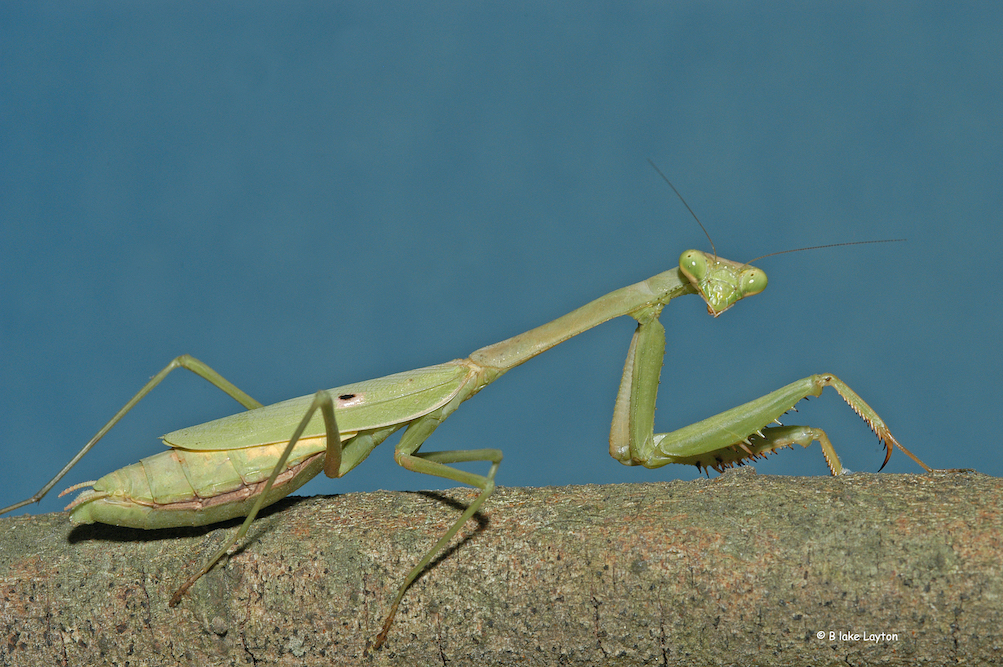Carolina Mantid, Vol. 6, No. 31
Related News
June 17, 2015
June 4, 2015
May 19, 2015

Order: Mantodea
Family: Mantidae
Preying mantids are some of the most readily recognized insects in the country. Their shape and posture are distinctive, and their large eyes; mobile head; and alert, watchful behavior make them seem smarter than your average bug. There are only a few dozen species of mantids in the US. Carolina mantids are the most common species in the Southeast, but they also occur in many other states and into Central and South America. You are not likely to encounter an adult Carolina mantid until late summer or fall because they only complete one generation per year and it takes them most of the summer to grow up.
Carolina mantids vary in color. Some are green, some are gray, and some are brown, but they are not able to change color once they become adults. Mature females range from 2 to 2.5 inches long and have enlarged abdomens with wings shorter than the abdomen. They can fly with those short wings, but flight is difficult for females swollen with eggs. Males are slightly shorter, much slenderer and their wings reach the tip of the abdomen. Male mantids are sometimes seen flying about in late afternoon as they search for females. It is true that females sometimes eat their mates, sometimes beginning before the mating process is even finished, but this does not always occur. Mantids will also devour one another at other times if given the opportunity. For example, mantid nymphs will cannibalize their siblings, especially if they are crowded together in captivity.
One common misconception about preying mantids is that they are important beneficial insects, and there are even places that sell mantid egg cases for release in home gardens and landscapes. Mantids are predators, but they are generalist predators and most of the insects they eat are not pests. They are more likely to capture insects such as bees and butterflies than serious pest insects such as stink bugs and hornworms. Mantids do sometimes feed on pest species, but these are a relatively small portion of their diet. Even if they only fed on pest insects, mantids are just not numerous enough to significantly affect pest populations. Mantids are interesting miniature wildlife, but they are not beneficial insects.
See See Bug's Eye View No. 34 of 2016 for information on the Chinese mantid, a non-native mantid that occurs through much of the US.
See Bug's Eye View No. 26 of 2020 for information on two-striped stick insects. These plant-feeding insects are sometimes confused with mantids.
Blake Layton, Extension Entomology Specialist, Mississippi State University Extension Service.
The information given here is for educational purposes only. Always read and follow current label directions. Specific commercial products are mentioned as examples only and reference to specific products or trade names is made with the understanding that no discrimination is intended to other products that may also be suitable and appropriately labeled.
Mississippi State University is an equal opportunity institution.